 Ty Vek
Ty Vek

Self: Id, Superego, Ego — June 27-29, 2023
A trilogy released over three days exploring identity. [view on fxhash ↗︎]
Let's talk about inspiration/concept first, and then we'll get into release mechanics, reserve structures and all that.
I've been wanting to work on some version of portraits (self or otherwise) for a while, and this trilogy kind of unfolded as I dissected an exploration which I felt was trying to distill identity into discrete emotional/spiritual components.
I don't believe our bodies, names or presentation define us; they can communicate something we desire to project or reinforce our internal convictions, but they don't define us unless we decide that's all we are, which feels like selling yourself short, or a cop-out.
We don't get to choose the attributes of our body, or what environment in which we are raised… we just have to make do with whatever we're dealt.
What then makes us, well, us? Are we anything at all? What instincts, desires or emotions drive us? How does context affect that? How does morality or shame play into it? Or having a functional upbringing? What about genetics or circumstance?
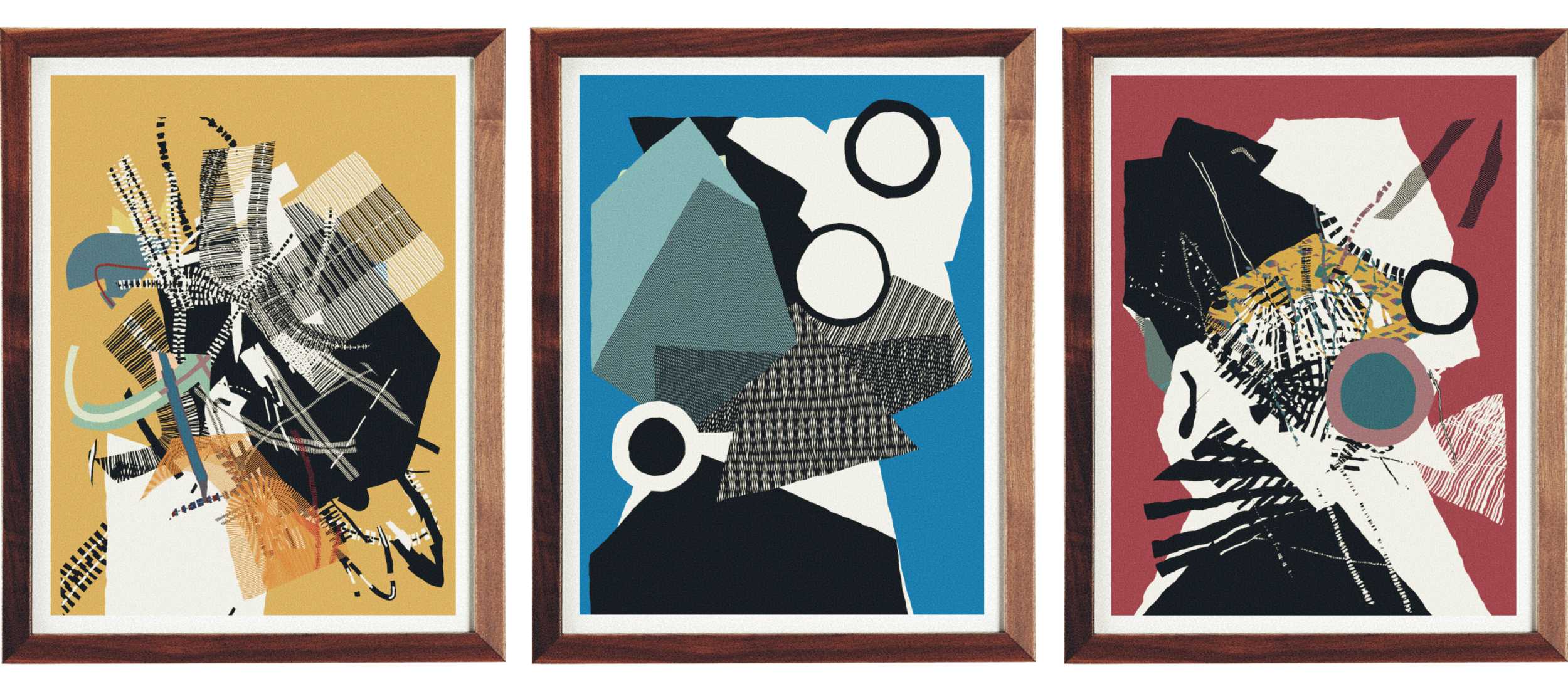
I have no real answers, but my exploration landed here: a set of three collections loosely structured around the components of Freud's model of self: the id, superego and ego.
Above is a render of each in that respective order, and the hope is that they are presented as a triptych, but that is ultimately up to the collector. Please don't break my heart.
Let's start with acknowledging Freud's model of self isn't law or without flaw. Some say he's coke-head fraud who's full of shit and they're likely right. His model isn't even the most currently embraced. That's probably IFS (Internal Family Systems Model)—which breaks down the mind into parts (kind of like the roles of family members), and what lies beneath these parts is the true self. These parts may intend well, even if they aren't actually always all that helpful or even close to functional. It feels like a more refined, compassionate version of Freud's model, but I'm sure that's reductive.
Regardless, even if he was probably high when he came up with it... Freud's model can still provide an interesting lens to consider ourselves through.
It positions the ego (who we are) as trying to harness, mediate and fuse the id (subconscious instinct/desire) with the superego (morality/ethics via society/family/religion/etc.)
An iceberg is often used to illustrate how these pieces interact but the examples I found online were ugly so I made my own. Don't read into the bird or the shark, they mean nothing.
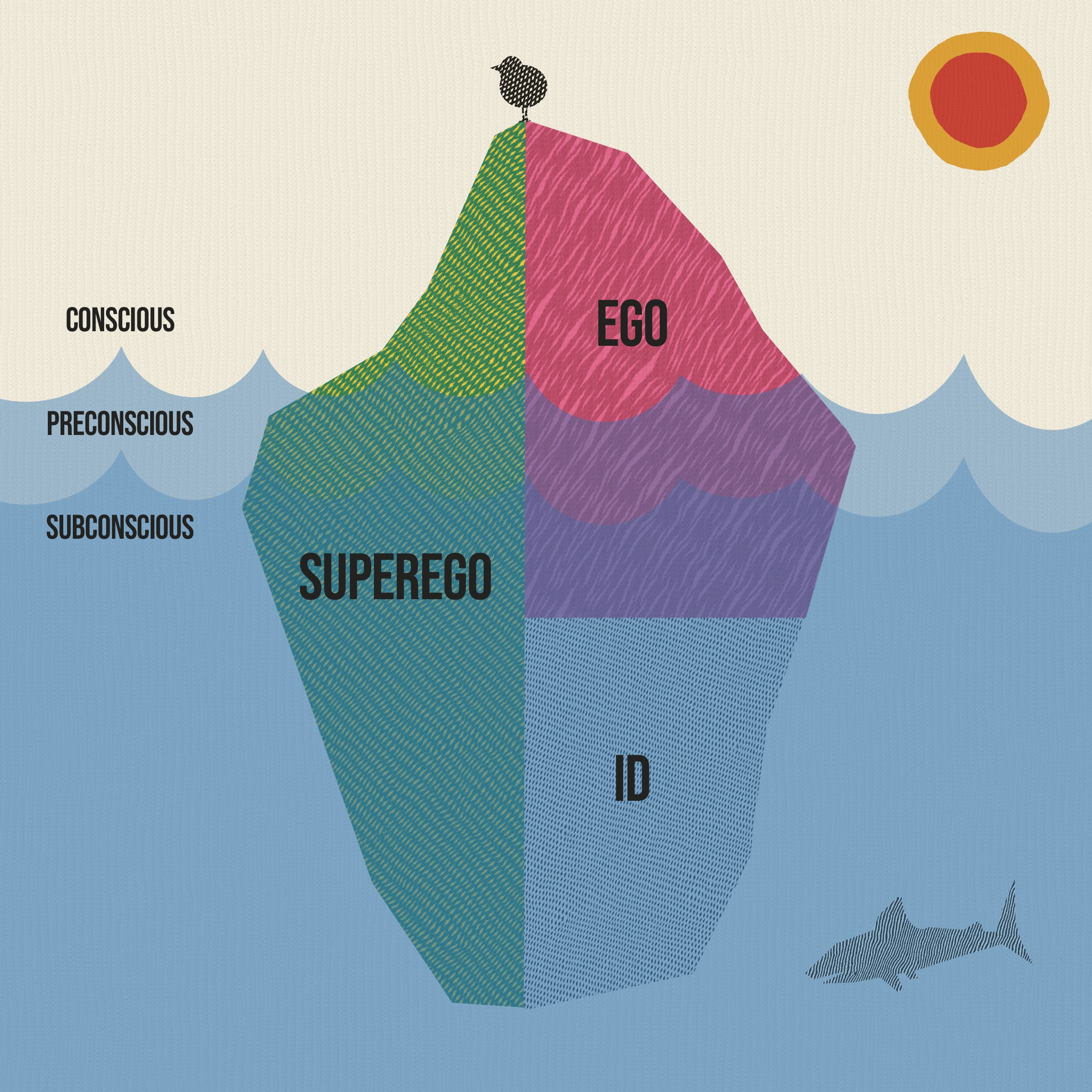
Said another way, we construct who we are (ego) by choosing what impulses (id) we allow to seep through the filter of what society defines as proper (superego). This may mean ignoring the superego or repressing our id... (depending on the circumstance.)
And yes, I'm paraphrasing, probably to an offensive point. But again, this isn't about being exactly inline with Freud… I just like the tension that it describes even if there are cracks in the model.
It resonates because of this conflict between self and reality, at least for me.
This battle between the id and superego is violent, repressive, sensual and grotesque… all while hopefully being motivated by some sort of self-compassion.
The superego wants to save you from yourself, and maybe it's right at times, maybe not. Like the parts as defined by IFS, it probably intends well, but outcomes may vary. These systems are often motivated by fear, manufactured or otherwise, and that can lead to problematic solutions.
The ego is effectively trying to hide the id's true selfish impulses so it feels safe in the world. For a narcissist, this is probably a pretty superficial effort, while most folks probably want to feel that they actually are good, moral and ethical entities in the world. We want to be accepted and feel justified in our values, even if insecurity or sociopathy may convince some of us that we don't need that feeling of belonging.
The id is mysterious... either because it comes from so deep in the subconscious that it is difficult to see/identify or because we haven't yet learned (or refuse to learn) enough about ourselves to understand what these motivations within us even are.
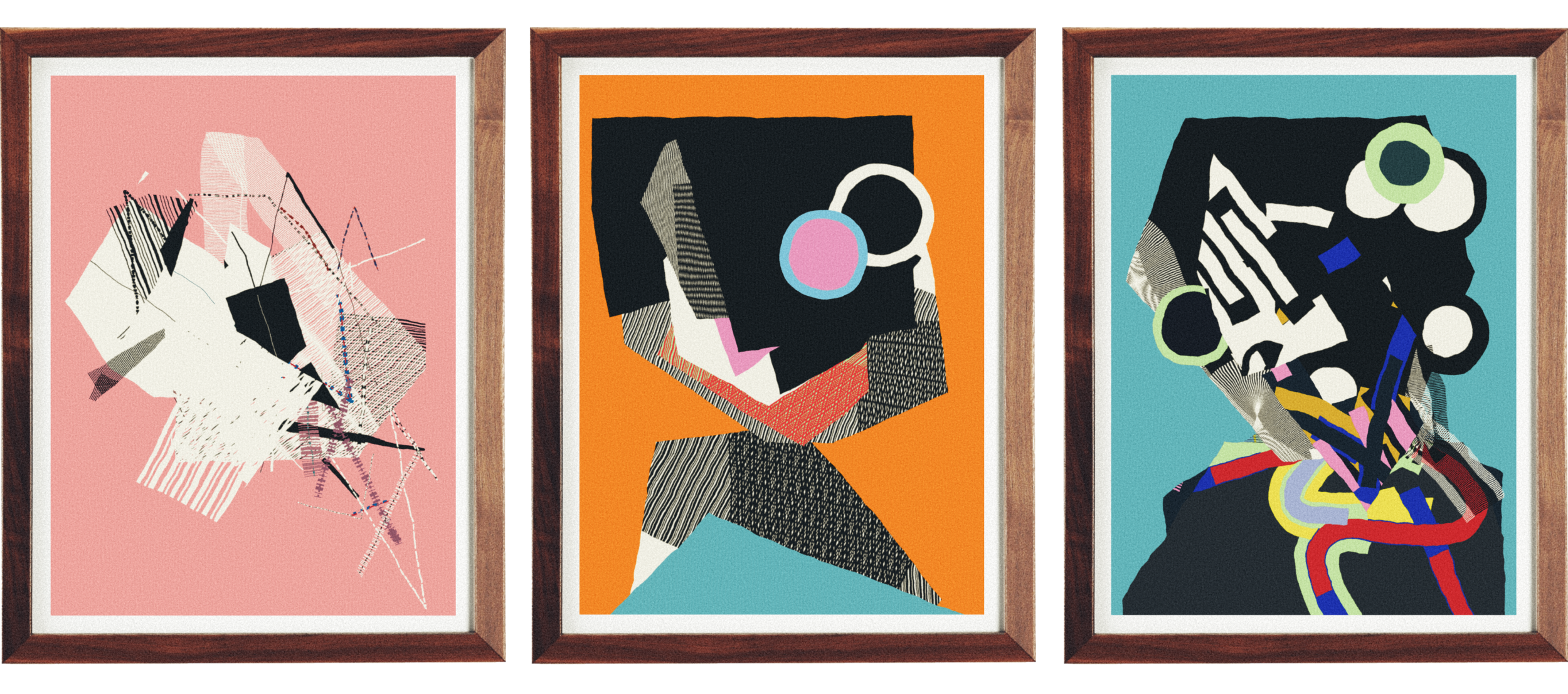
Not to skip ahead to mechanics of the drop (which are fully explained at the end of this article), but the final installment, Ego, will be a collector-curated project via fx(params), while Id and Superego will be traditional long-form projects…
Simply, the collector will have control over what their Ego will look like, and that could incorporate or discard what their Id or Superego prescribe for them. (I think that maps.)
Whatever they decide, their Ego will be some projection of self, even if merely a reflection of aesthetic sensibilities… which is arguably the product of their instincts and whatever they have internalized as “good taste” from the world around them. (So again, id and superego)
Are these decisions we make really ours or just a safe regurgitation of reality?
When aren't we mirroring?
How will this article itself affect what people select as their Ego?
How affected will they be by their iterations of Id or Superego?
It's hard to believe anyone has purely original sensibilities which aren't at least somewhat affected by what the external world thinks (or what is assumed that it may think.)
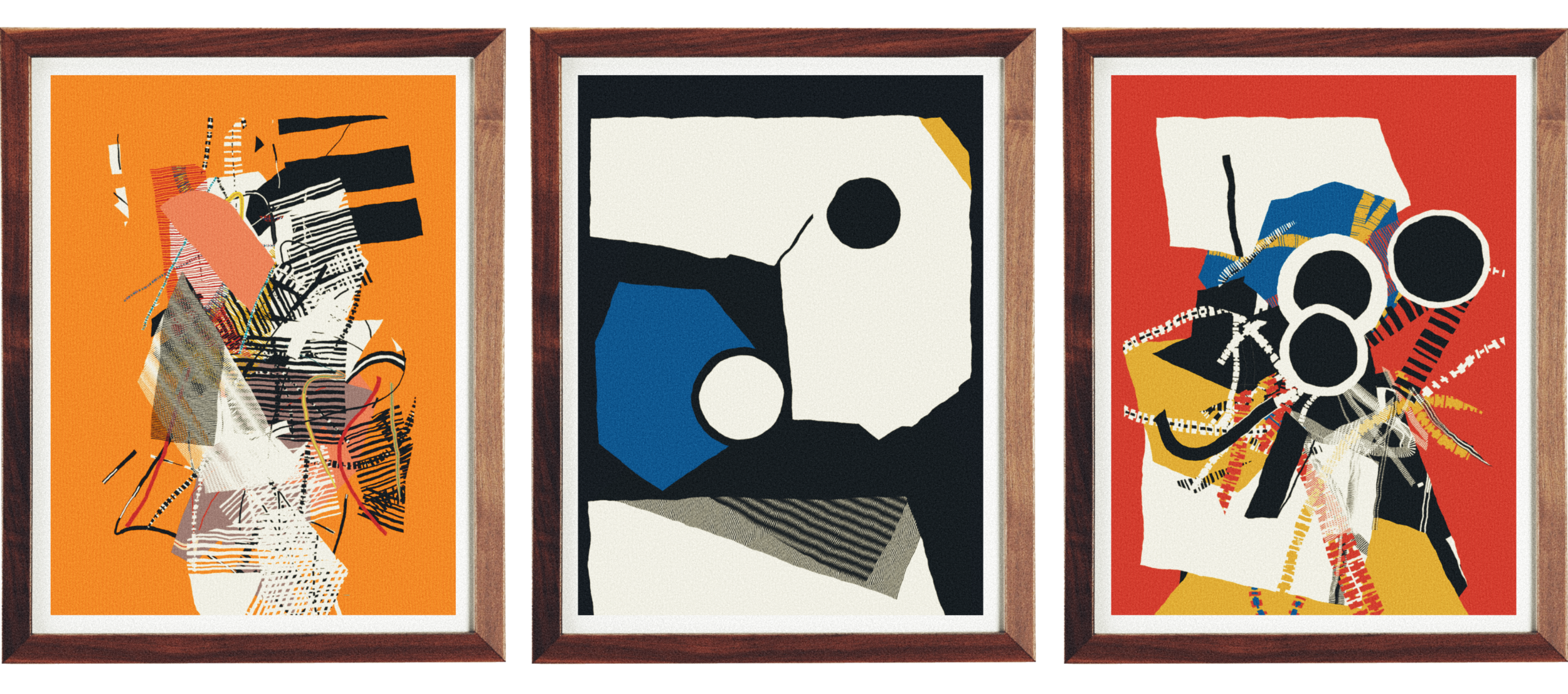
I love the Leo Steinberg quote that “all art is infested with other art” and I think that applies to life and self as well; a lot of what we are doing is trying to mirror others we agree with, or idolize in some way… yes, we have our values and convictions, but where did those come from? Do we really make any decisions or is everything we do (or think) just a result of our programming and context?
I'll also reference Rick Rubin from his book, The Creative Act, because according to twitter it seems we're all reading it this year. If you haven't, just fucking read it already. It will absolutely change your context and programming in a good way.
One of the points he makes is that creativity/content doesn't come from within us. It comes from opening up and allowing the world and the ideas already floating around to flow through us. We may take what we find and remix it, in a sense, but all we are is a lens. This isn't a bad thing; it just changes the role of the artist to an interpreter rather than the more overwhelming role of being the source of new ideas, or thought. (Arguably this was already the case.)
This is not to say I don't think original thought exists, it surely does... but being able to discover and reframe in novel ways can be magic.
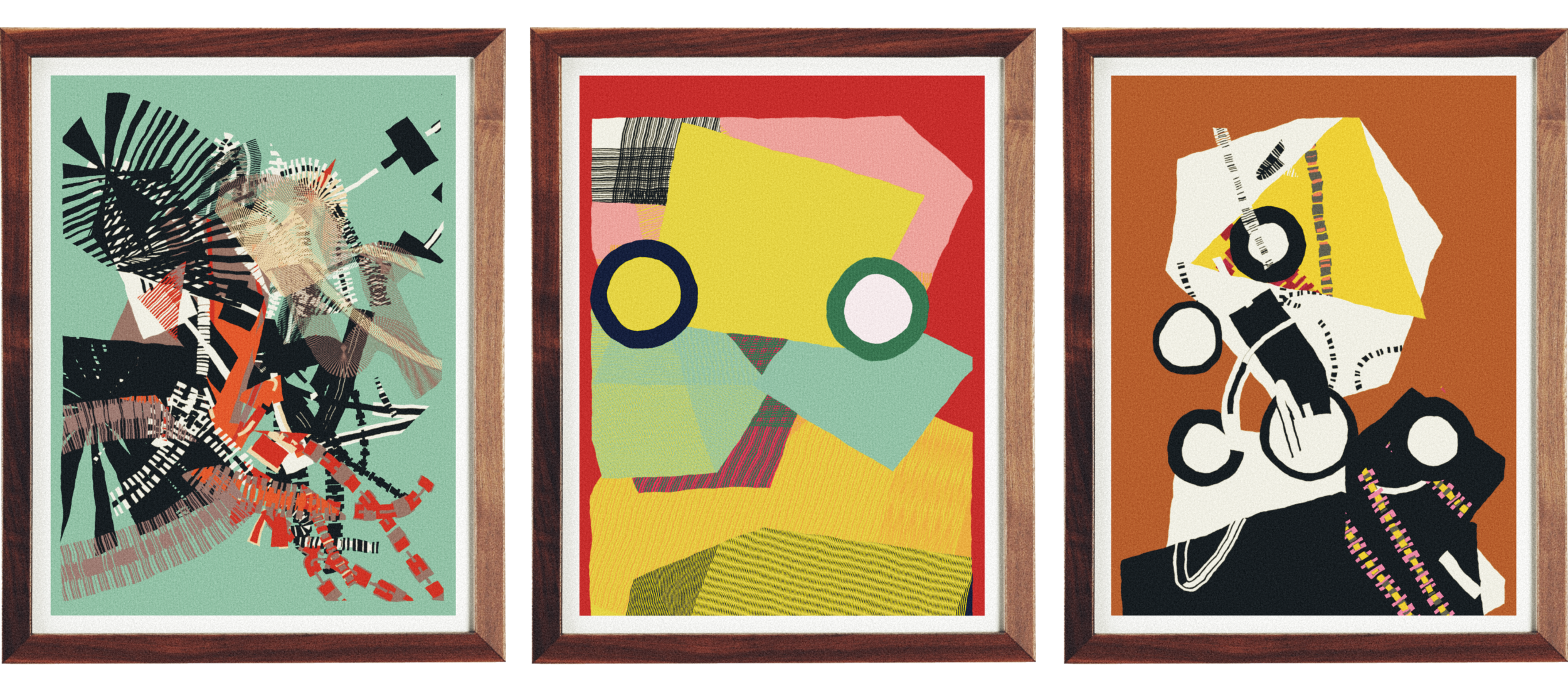
Still, much of artistic creation involves trying to disregard what is expected so the viewer is challenged in some way, all while remaining true to what we think we value.
How do we adjust the lens?
What accidents along the way reveal the most?
Are chaos and mutation the only true sources of originality?
Even what we are trying to express can't purely be driven by our internal self as if in some mystical vacuum; it is inevitably polluted by the environment. This isn't necessarily a bad thing either. This is why it can resonate. Context.
Art is a reflection of the moment in which it was created so it can help to be taken in that context, and hopefully that reflection can evolve along with the world it lives in.
Maybe the only skill an artist really needs is the ability to reframe their superego, instead of taking it at face value. If we accept that all art is interpretation then the reason there is a limitless supply of art is because the world is in constant flux and in need of translation.
I'm also kind of liking an interpretation of this trilogy as using Freud's model of self as a metaphor for the creative act in general… where reality is represented as this chaotic id, the superego as the status quo trying to neatly package that reality, and finally artistic expression as the ego… which attempts to reframe reality to challenge the status quo.
•••••••••
Let's briefly break down each of the three collections.
Part 1: Id

Id is supposed to feel like a fucking mess... hopefully a compelling mess, but a mess nonetheless.
These are our unfiltered desires, so I wanted it to come through as unbridled and far from anything representational… even if occasionally they can come out looking like a face, bust or some other form like a human heart… ventricles, veins and all.
We're going to see what we want or need to, but that's all unintentional... it's more about energy than objects, or the fragments of DNA and ancestral trauma that push us this way or that.
Part 2: Superego
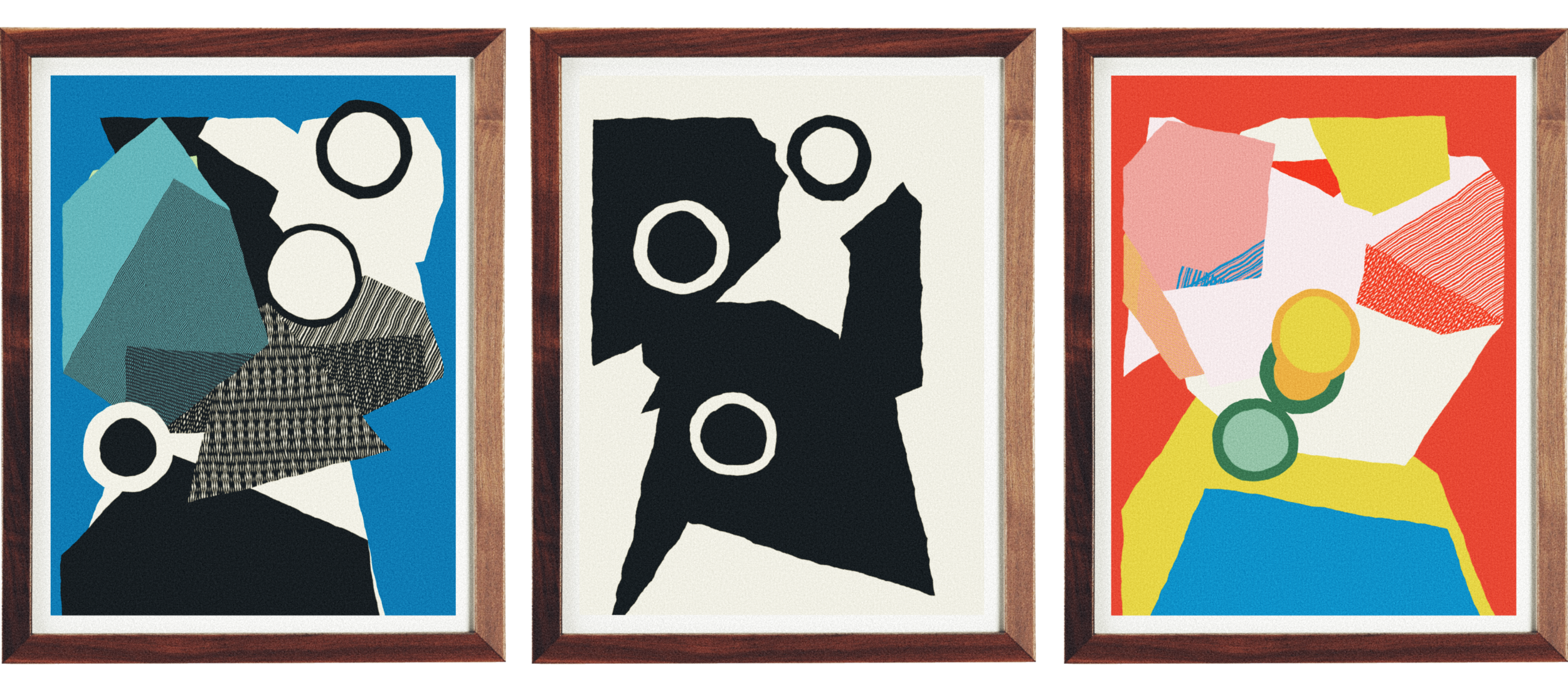
Superego is composed to be feel a bit more structured, maybe even architectural at times. The components are kind of like panels, lightly quilt-like. They may contain patterns, which could represent a proposed morality, etiquette or just some distortion of reality.
Even if they represent something as precarious and full of contradiction as society, they attempt to present as cohesive and stable.
But superego is more than just an example. It is also something that judges, so I wanted it to feel like something watching you. It may induce guilt/shame or alternatively provide reinforcement. It tells you what is good and what is bad. Even if they are anything but reliable examples of that, they present some version of dogma to be internalized.
Part 3: Ego

Ego merges these two entities, superficially or in earnest.
The ego decides how much id it shows, and may wear its superego as a costume concealing its improper nature or as a proud uniform.
It acts as a filter and a facade, delivering some conscious or unconscious composition of self. It may believe in what it presents, or there may be inner conflict.
These depictions can be chaotic as well. It takes a fair amount of introspection to really know yourself and that still doesn't mean that what comes out is particularly clean. It might even be messier, just better understood.
Like the other parts of the trilogy, they present a type of x-ray rather than a literal presentation.
There's hints of compulsion and control.
What's bubbling under the skin, driving or feeding our conscious thought? What has been processed or filtered and what hasn't?
A battle of safety, conformity, instincts, desire and self-expression.
•••••••••
Note:
Ego is a params project which means you can adjust how it will look. I decided to give more leeway
to the minter so that there are more options in how they can present their Ego, but in that, I kinda
gave enough rope to hang yourself. (i.e. create what might be an trash output, but who knows, maybe you want
that. We love Trash Art.)
Default settings:
Personality: Fluid, Conformity: 3, Fragility: 4, Anxiety: 3, Vibrancy: 5, Vulnerability: 5
If this were not a params project, I would've kept values near here for all outputs, for the most part. This is not to say these are the only settings that provide interesting outputs, but they can be a bit more consistent. Please curate well, whatever params you go with.
Mechanics
This trilogy will be released as three projects.
The first two (Id & Superego) as traditional long-form projects where what you get is randomly assigned at mint time.
The final project (Ego) will be released as an fx(params) project where the collector chooses what their portrait will look like. (WYSIWYG.) They can be designed to complement an Id and Superego or clash with it.
It's intended to be a triptych, so a domino-style expiring reserve model is going to be used so collectors of the first series will have ample opportunity to complete their triptych if so desired. Details below.
They will be released in quick succession over 3 days.
Each of the 3 collections will be 234 iterations, 32 tez each.
Release Dates
→ Publishing - Monday, June 26th (Or, maybe Sunday)
This statement will be re-published as a fxtext article and all 3 projects will also be minted as generative
tokens on fxhash so you have time to play with the algorithms, maybe even saving some Ego outputs
that you like so you are ready to go for Thursday.
→ Id - Tuesday, June 27th, 17:00 UTC (1pm ET)
(Half open, half reserved for existing holders, expiring after 24 hours. This will be an over-allocated
reserve pool. See details below.)
→ Superego - Wednesday, June 28th, 18:00 UTC (2pm ET)
(1 reserve per Id held, expiring after 24 hours)
→ Ego - Thursday, June 29th, 19:00 UTC (3pm ET)
(1 reserve per Superego held, expiring after 24 hours)
Reserve Notes
→ Id will initially be half reserved for anyone that holds a piece from Commune, Verdant Brut or Artifice. It will be updated just before going live*. Keep in mind these reserve pools will be over-allocated. This means there will be ~100 reserved for ~300 holders. First come, first served. Top 5 holders of those collections will have guaranteed reserves. After 24 hours, all reserves will be removed.
→ Superego will be reserved for holders of Id at time of drop*. One per iteration. This hopefully gives the opportunity for collecting multiple triptychs without stress if you've collected the first piece. After 24 hours, all reserves will be removed**.
→ Ego is similar to Superego, but the reserves will be granted to Superego holders at time of drop*. One per iteration. This will allow folks to finish their triptych if they desire. After 24 hours, all reserves will be removed**.
* All relevant holder snapshots will happen ~10 minutes before their respective drops.
** If you have a reserve that you plan on using for Superego or Ego but can't make the 24 hour deadline, DM me on twitter and we'll work something out.
Display notes/Commands
All projects are written in vanilla Javascript, composed as SVG and then rendered to a 2d canvas.
Press "S" to save a PNG at the current resolution.
Press "V" to save a SVG. (Chromium browsers render these pretty well.)
There might be slight differences in rendering from browser to browser. This is expected as they might translate the SVG slightly differently. Let's call Chromium renderings canonical. They also render faster there and we love that.
By default, these will render at 2400 x 3200 pixels. This is at density 1. To render at a larger resolution you can add &d=2 to the end of the url. This will double the resolution. You can also use 3 or 4 or whatever your browser can handle. Safari tends to have problems with this, so stick with Chromium based browsers (Chrome, Edge, Brave, etc.)
If you want to render as a square image, so it is optimized for ummm.. your pfp or something, you can add &sq=t to the url. While the main composition is unchanged, it is better positioned to be well-cropped within a circle.
Printing Notes
The key thing here is texture for printing, so the main advice I can give is to find a printer that has the paper that will work best and go from there. Personally, I made prints using Hahnemühle William Turner (310 gsm) but there a number of papers from Hahnemühle that will work, like German Etching (310 gsm) or Museum Etching (350 gsm).
If you have a local printer that you like, please support them. If not, I recommend Whitewall for ease, expediency and a high quality print. Choose their "Fine Art Print" (which uses the Giclée process) and then make sure to select the William Turner paper. Tribeca Printworks is another option, they have German Etching paper and while I haven't personally used them, they are well regarded.
To get high resolution images for the print, open the piece in live view and then add &d=2 to the url to get a PNG at 4800 x 6400, which will be good up to 16" wide. Use &d=3 for 7200 x 9600 for up to 24" wide. (And go larger if you need, but that's already pretty large.) Chromium browsers work best for high resolution images, so please use Chrome, Edge, Brave or whatever Chromium browser you like.
The print size I choose for myself is 12" x 16" and while that doesn't sound too large, when mounted as a triptych, it takes a fair amount of space. Whatever you choose, I'd love to see them, so please tag me on twitter if you happen to post them!
If you'd like to see a few pictures of the prints I had made at Whitewall, check out this twitter thread. Thank you for reading!
•••••••••
View projects: [go to fxhash ↗︎]
Follow on Twitter: [@ty__vek
↗︎]